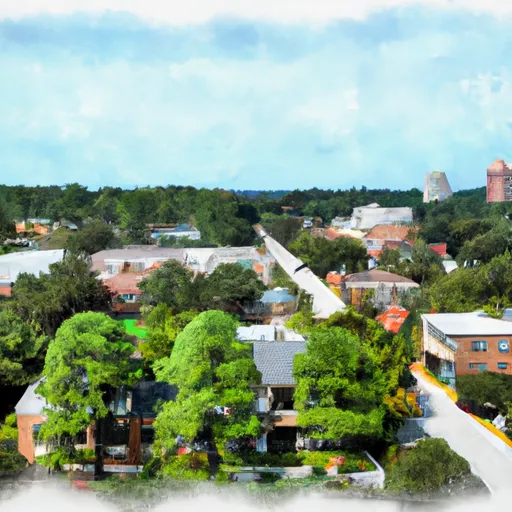-
 Snoflo Premium
Snoflo Premium
Get unlimited access to all our content
With no Ad interruptions! - Start Your Free Trial Login with existing account
Juno
Eden Index
Climate
7.4
•
Recreation
4.5
•
Community
3.4
•
Safeguard
5.4/10

Juno, Georgia is a small rural town located in the southeastern United States. Known for its picturesque landscapes and friendly community, Juno experiences a humid subtropical climate typical of the region. Summers are hot and humid, with temperatures often exceeding 90°F (32°C), while winters are mild, rarely dipping below freezing. The area receives ample rainfall throughout the year, making it conducive to various hydrology constituents such as streams, rivers, and small ponds.
Juno boasts several outdoor recreation opportunities that cater to nature enthusiasts. Fishing enthusiasts can explore the numerous water bodies, including the nearby Juno Lake, where they can try their hand at catching bass, catfish, and sunfish. The town is surrounded by lush forests, making it ideal for hiking and birdwatching. The Juno State Park offers scenic trails that wind through the woodlands, providing visitors with breathtaking views and opportunities to spot local wildlife.
Additionally, Juno hosts various community events that celebrate the outdoors, such as annual fishing tournaments and nature walks. These events encourage residents and visitors to experience the natural beauty and recreational opportunities that Juno has to offer.
What is the Eden Index?
The Snoflo Eden Index serves as a comprehensive rating system for regions, evaluating their desirability through a holistic assessment of climate health, outdoor recreation opportunities, and natural disaster risk, acknowledging the profound impact of these factors on livability and well-being.
Climate Health Indicator (CHI): 7.4
Juno receives approximately
1488mm of rain per year,
with humidity levels near 82%
and air temperatures averaging around
15°C.
Juno has a plant hardyness factor of
7, meaning
plants and agriculture in this region tend to thrive during the non-winter months.
By considering the ideal temperature range, reliable water supplies, clean air, and stable seasonal rain or snowpacks, the Climate Health Indicator (CHI) underscores the significance of a healthy climate as the foundation for quality living.
A healthy climate is paramount for ensuring a high quality of life and livability in a region, fostering both physical well-being and environmental harmony. This can be characterized by ideal temperatures, reliable access to water supplies, clean air, and consistent seasonal rain or snowpacks.
Weather Forecast
Streamflow Conditions
Coosa-Tallapoosa
Area Rivers
Coosa-Tallapoosa
Snowpack Depths
Coosa-Tallapoosa
Reservoir Storage Capacity
Coosa-Tallapoosa
Groundwater Levels
Recreational Opportunity Index (ROI): 4.5
The Recreational Opportunity Index (ROI) recognizes the value of outdoor recreational options, such as parks, hiking trails, camping sites, and fishing spots, while acknowledging that climate plays a pivotal role in ensuring the comfort and consistency of these experiences.
Access to outdoor recreational opportunities, encompassing activities such as parks, hiking, camping, and fishing, is crucial for overall well-being, and the climate plays a pivotal role in enabling and enhancing these experiences, ensuring that individuals can engage in nature-based activities comfortably and consistently.
Camping Areas
| Campground | Campsites | Reservations | Toilets | Showers | Elevation |
|---|---|---|---|---|---|
| Old Federal - Lake Lanier | None | 1,108 ft | |||
| Sawnee | None | 1,070 ft | |||
| Indian Springs State Park | None | 503 ft | |||
| Shoal Creek - Lake Lanier | None | 1,117 ft | |||
| High Falls State Park | None | 600 ft | |||
| Stone Mountain Park Campground | 430 | 1,558 ft | |||
| Whitewater Creek County Park | 48 | 293 ft | |||
| Shady Grove - Lake Lanier | None | 1,113 ft | |||
| Chestnut Ridge - Lake Lanier | None | 1,108 ft | |||
| Bald Ridge Creek | None | 1,097 ft |
Nearby Ski Areas
Catastrophe Safeguard Index (CSI):
The Catastrophe Safeguard Index (CSI) recognizes that natural disaster risk, encompassing floods, fires, hurricanes, and tornadoes, can drastically affect safety and the overall appeal of an area.
The level of natural disaster risk in a region significantly affects safety and the overall livability, with climate change amplifying these risks by potentially increasing the frequency and intensity of events like floods, fires, hurricanes, and tornadoes, thereby posing substantial challenges to community resilience and well-being.
Community Resilience Indicator (CRI): 3.4
The Community Resilience Indicator (CRI) recognizes that education, healthcare, and socioeconomics are crucial to the well-being of a region. The CRI acknowledges the profound impact of these elements on residents' overall quality of life. By evaluating educational resources, healthcare accessibility, and economic inclusivity, the index captures the essential aspects that contribute to a thriving community, fostering resident satisfaction, equity, and social cohesion.

